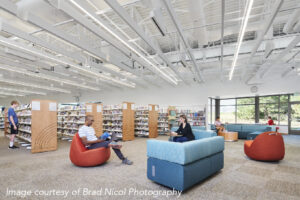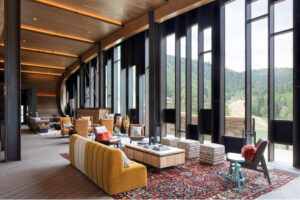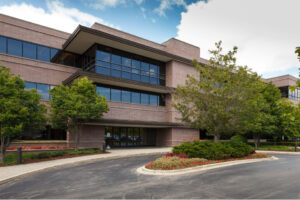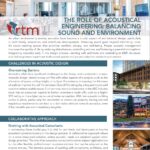As urban environments evolve, acoustics have become a crucial aspect of architectural design, particularly in multi-family, renovation, and mixed-use developments. Balancing sound goes beyond minimizing noise; it’s about creating spaces that prioritize comfort, privacy, and well-being. Proper acoustic management improves the quality of life by reducing disturbances, controlling echoes, and fostering a peaceful atmosphere. Integrating acoustics early in the design process—starting with architects and extending to MEP, structural, and civil engineers—optimizes both sound quality and project value for residents and owners.
CHALLENGES IN ACOUSTIC DESIGN

Overcoming Barriers
Acoustics often face significant challenges in the design and construction phases. Acoustic design elements may conflict with other aspects of a project, such as the allocation of space, ceiling height, or budget. For instance, increasing the thickness of walls to improve Sound Transmission Class (STC) ratings by a few points can add cost and reduce usable space. Furthermore, many professionals in the AEC industry must rely on acoustical experts to better understand trade-offs, such as a higher STC rating or the subjective nature of noise perception. With few acoustic building codes in place, particularly for residential or mixed-use projects, having minimal regulatory requirements can lead to a dismissive attitude towards acoustics, even if the benefits are not immediately tangible.
COLLABORATIVE APPROACH
Working with Acoustical Consultants
In addressing these challenges, it is vital for architects and developers to involve acoustical consultants early in the design process. A collaborative approach allows for a more integrated solution, where acoustic needs are weighed against other design priorities. The role of an acoustical consultant is not to impose rigid solutions but to offer flexible, well-informed recommendations that can be adapted as the project evolves. The iterative process of working with consultants, architects, and other design professionals helps ensure that acoustics are considered as an integral component of the overall building strategy, rather than an afterthought or service compromised during value engineering.
LONG-TERM BENEFITS
Happier Occupants and Building Reputation
Ultimately, the benefits of thoughtful acoustic design are most apparent in the long term, as buildings with superior acoustics lead to happier occupants. While acoustics may go unnoticed when done well, poor acoustics can significantly detract from the quality of life, often leading to tenant dissatisfaction and complaints. Developers who embrace the value of acoustics early on will not only improve the comfort and privacy of their spaces but also build a reputation for delivering high-quality environments. As noise continues to be a pervasive issue in urban spaces, addressing acoustics thoughtfully and effectively can set a development apart in a competitive market.
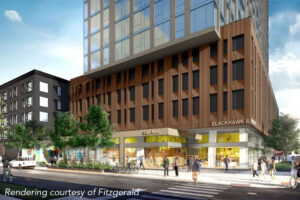

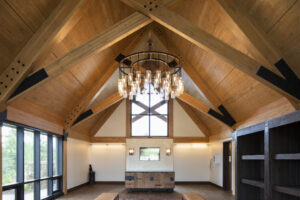
MEET OUR EXPERT IN ACOUSTICS DESIGN
Josh Curley, Senior Acoustical Consultant, brings 17+ years of experience in acoustical engineering across various sectors. He excels at addressing acoustical concerns pre-construction, ensuring that the project team integrates acoustics throughout the design process. Josh’s expertise in system complexities and material selection ensures seamless collaboration, helping owners enjoy their spaces free from unwanted noise.
 Josh Curley
Josh Curley
Senior Acoustical Consultant
17+ years of experience in acoustical design.
Contact Josh at joshua.curley@rtmec.com.
